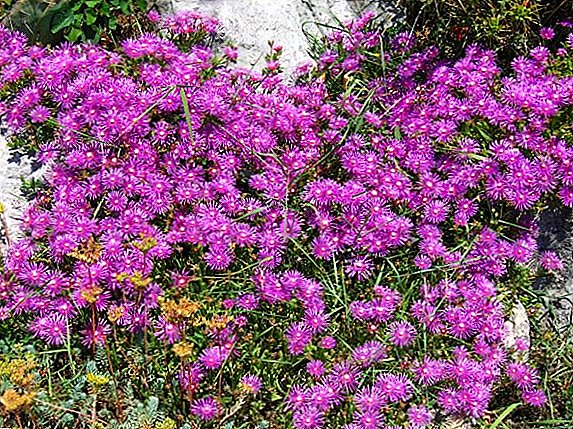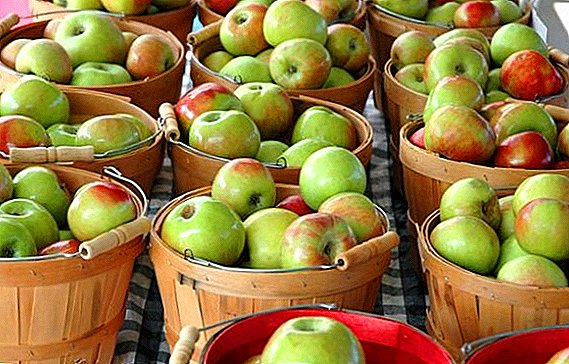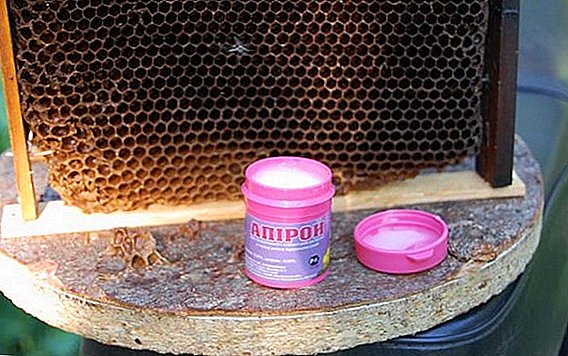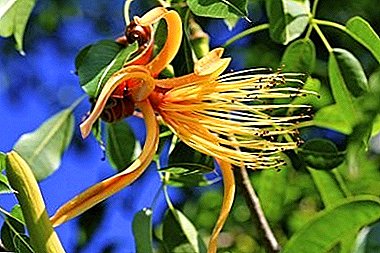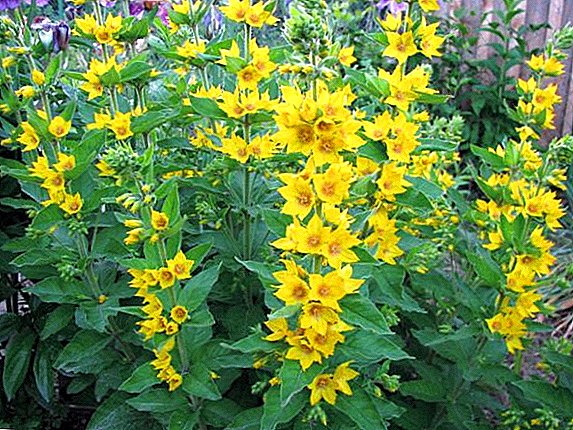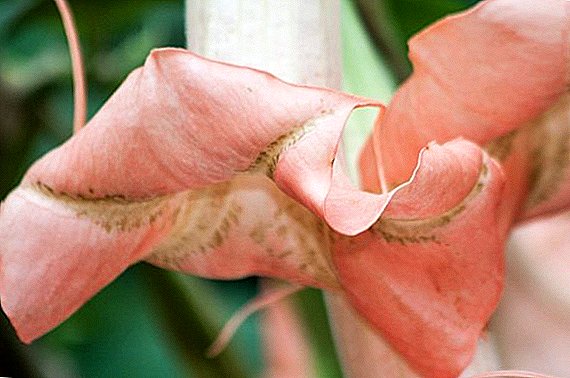
What do all farmers dream, especially beginners? Pink grapes. And in order to have more, and did not require complex care. Their dream came true - Helios, a real gift of amateur breeding.
It is extraordinarily beautiful, instantly sold, it can even be in wine, even in jam. Yes, and fresh is good - a rich nutmeg taste with an original aftertaste will literally love everything.
That's just with the care is not so simple - like any pink grapes, Helios requires care.
What kind is it?
Its second name is Arcadia pink. Hybrid table subspecies of pink grapes. Pink grapes also include Angelica, Gurzufsky pink, Dubovsky pink.
The ripening period is early: the berry is ready for removal by early August, but farmers are advised to let it hang until the autumn, so that it can pick up sugar.
Most of all they love him fresh for an unusually pleasant and aromatic taste - rich nutmeg with hints of fruit, strawberries and roses.
It is used by winemakers in bouquets of table and dessert wines. Well makes and storage, and transportation, does not crack. It is also a wonderful decoration of a hedge or walls of a house.
For fences and arbours are also suitable Supaga, Shahin Iran, Zagrava.
Helios Grape: variety description
 The bush is distinguished by its great strength, its clusters are large (they can reach a weight of one and a half kilos), moderately dense, cylindro-cone-shaped. By pea not inclined.
The bush is distinguished by its great strength, its clusters are large (they can reach a weight of one and a half kilos), moderately dense, cylindro-cone-shaped. By pea not inclined.
Such varieties as Aleshenkin Dar, Zest, Victoria are not susceptible to peas.
Berry large (13-14g), oval, light red color. The skin is dense, medium thickness, edible. Flower androgynous.
Inside the berries are one or two full seeds. Pulp fleshy, juicy, with a rich nutmeg flavor.
Shoots golden brown with dark red knots. Leaves large, dark green, strongly cut. Peduncle dense, light green.
A photo
Pictorial photos of the Helios grape variety:



Breeding history
Helios - the fruit of labor of amateur breeder V.N. Krainova. Obtained from the crossing of Arcadia with the sultry variety Nakhodka.
Distributed throughout the south - from Moldova to the Caucasus, is found in temperate latitudes, where the winters are not too severe.
Specifications
Aging shoots, rooting cuttings, as well as liveability with rootstocks are good. High resistance to rot, oidium and mildew, phylloxera, wasps. True, heat-loving - its limit is 23-24 degrees Celsius.
For the winter, be sure to cover. Requires additional care - thinning, watering, fertilizing. Very fruitful.
Cut to 6-8 eyes; rate - up to 40 per bush. Does not like spring frosts. Sugar content - up to 22%, acidity level - 6-8 g / l.
Diseases and pests
Wasps do not take this grape, but people have yet to withdraw a form that is not afraid of birds. Therefore, it is necessary to take measures - to install a net fence around the vineyard, which would not allow the birds to the berries. It must be tough and durable rope nets are not suitable for this - you also need to protect the grapes, and not to collect tangled and dead birds. Let it be better to peck caterpillars and other pests.
Another equally serious enemy is grape pruritus or felt mite. This eats literally everything that it sees - grape shoots, leaves, inflorescences, ovaries.
You can also transfer it on anything - this is planting material, garden tools, and even wind. Struggling with it spraying sulfur-containing drugs, as well as acaricides. These are BI-58, Vertimek, Karate-Zeon, Aktara.
Bacterial cancer. Rarely, but still, this disease can affect Helios. Against him, the funds have not yet been invented - or rather, invented, but are in the experimental stage. May be affected by anthracnose and chlorosis.
 Therefore, it is necessary to take care of the grapes, “treat” with mineral fertilizers, water and not injure the bushes. There is only one road to the diseased parts - the ripping and the bonfire.
Therefore, it is necessary to take care of the grapes, “treat” with mineral fertilizers, water and not injure the bushes. There is only one road to the diseased parts - the ripping and the bonfire.
It is a pity, but it is better to sacrifice a bush than a whole vineyard, since this attack spreads very quickly and it is impossible to stop it with anything else.
As you can see, Helios does not require complex care, and the benefits from it are incomparably greater - neither frost nor fungal diseases, nor even wasps are terrible to him. This grape is good for both experienced and novice gardeners who want to have something "on their lot" on their lot, but are afraid that they will not cope due to lack of experience.
For novice winegrowers also fit Anyuta, Valery Voevoda, Romeo.
Helios doesn’t require such an experience; in fact, a standard set of procedures is needed, which even a beginner can easily implement.



